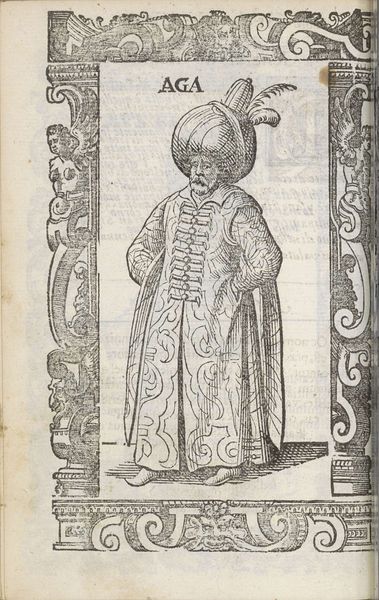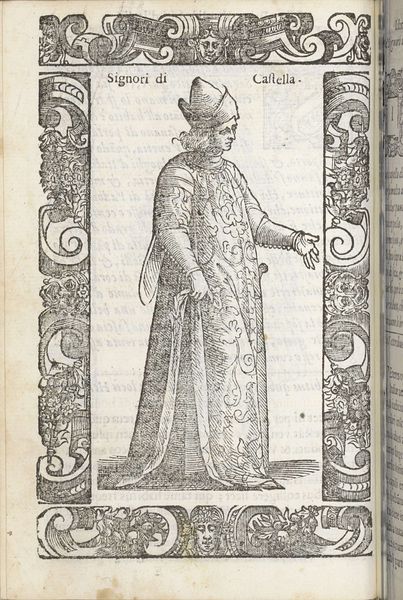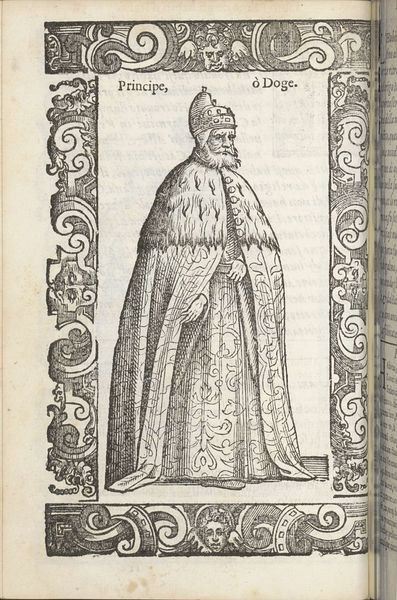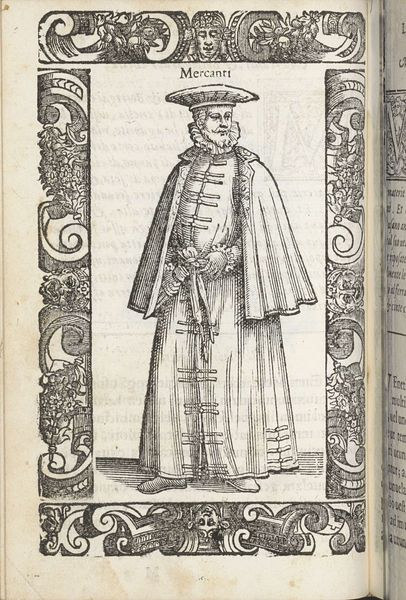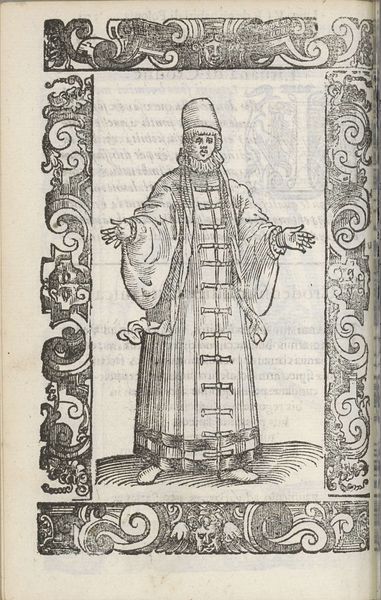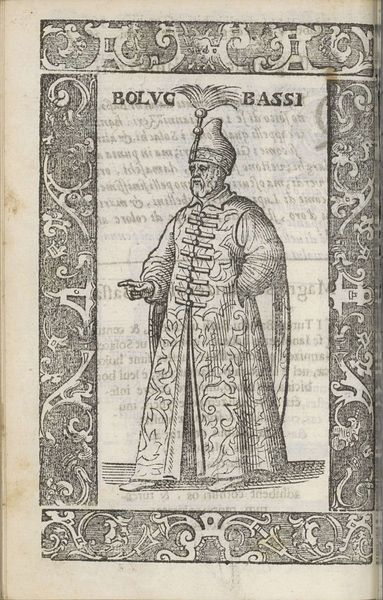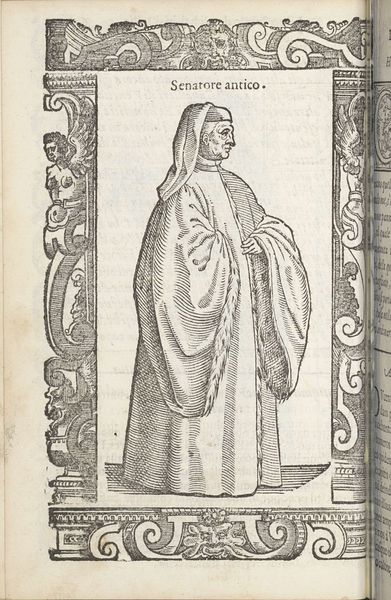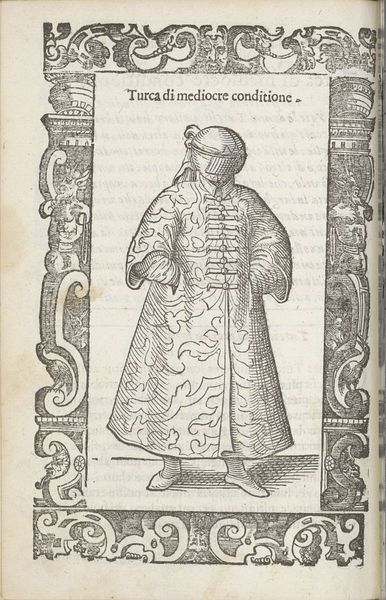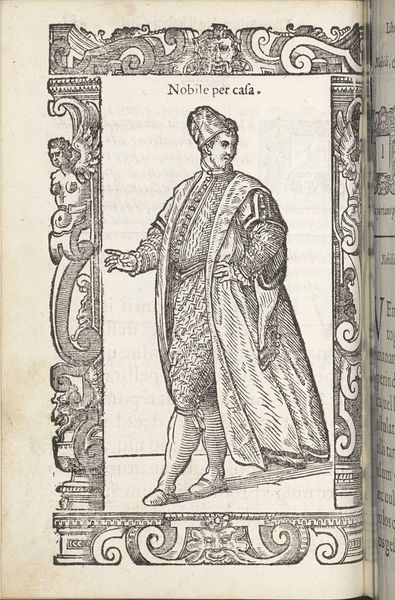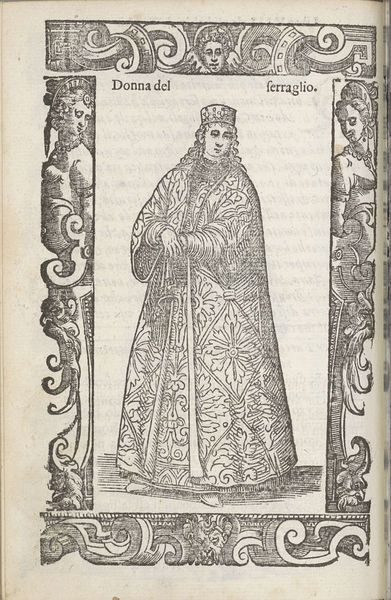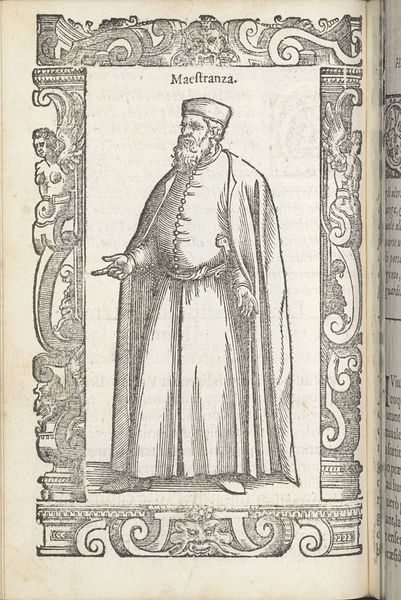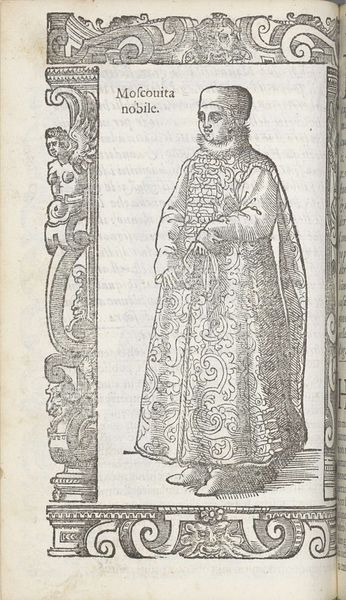
print, engraving
#
portrait
# print
#
figuration
#
italian-renaissance
#
engraving
Dimensions: height 167 mm, width 125 mm
Copyright: Rijks Museum: Open Domain
Curator: Allow me to introduce you to a captivating piece from 1598. It is an engraving by Christoph Krieger, titled "Adellijke dame uit het Venetië in 'Dogalina'," which translates to "Noble Lady from Venice in 'Dogalina'". Editor: My first impression is one of remarkable restraint within ornamentation. There is a beautiful tension between the simple, almost severe lines of her dress, and the fur details with decorative borders. Curator: It’s interesting that you say that, given Krieger’s keen focus on form. Look at the way he uses line to define the shape and volume of the lady's garments, focusing on conveying a sense of depth despite the limitations of the engraving medium. There is an incredible contrast between light and dark achieved with such simple materials. Editor: Yet, the very essence of printmaking, particularly engraving, underscores a crucial point about accessibility and the democratization of images. The circulation of such prints allowed for the dissemination of ideas about status and nobility beyond the Venetian elite. Think about the engraver painstakingly using tools to produce what appears like mink trim and what kind of labor division went into all of this. Curator: Agreed. The technical mastery of engraving cannot be divorced from its purpose; it aimed to reproduce and distribute idealized images. The linear precision creates a visual order, that elevates the subject in a controlled, and rather mannered presentation. Consider the compositional choices—the frame that holds the central figure in an orderly depiction. Editor: What you are speaking to also draws to question where exactly this material was sourced to make these pieces, and for what specific occasion. Consider too, how prints made such fashion trends rapidly available, influencing not only the fashions, but production cycles themselves. It becomes a global trade network from Venice to all over the world. Curator: Perhaps Krieger aimed to transcend the ephemeral nature of fashion and document an archetypal idea of nobility? Look closely: The linear patterns form a complex system. Each line and stroke has weight, volume and significance. Editor: True. I concede that Krieger uses material to shape and broadcast ideas about Venetian status across different regions, prompting dialogue between art, materiality, and commerce. The act of distributing is an important element. Curator: Indeed. Examining these details and their execution reveals so much of the intention behind this compelling figuration. Editor: And looking closer at that fine detail brings questions about materiality into richer context. Thank you!
Comments
No comments
Be the first to comment and join the conversation on the ultimate creative platform.
